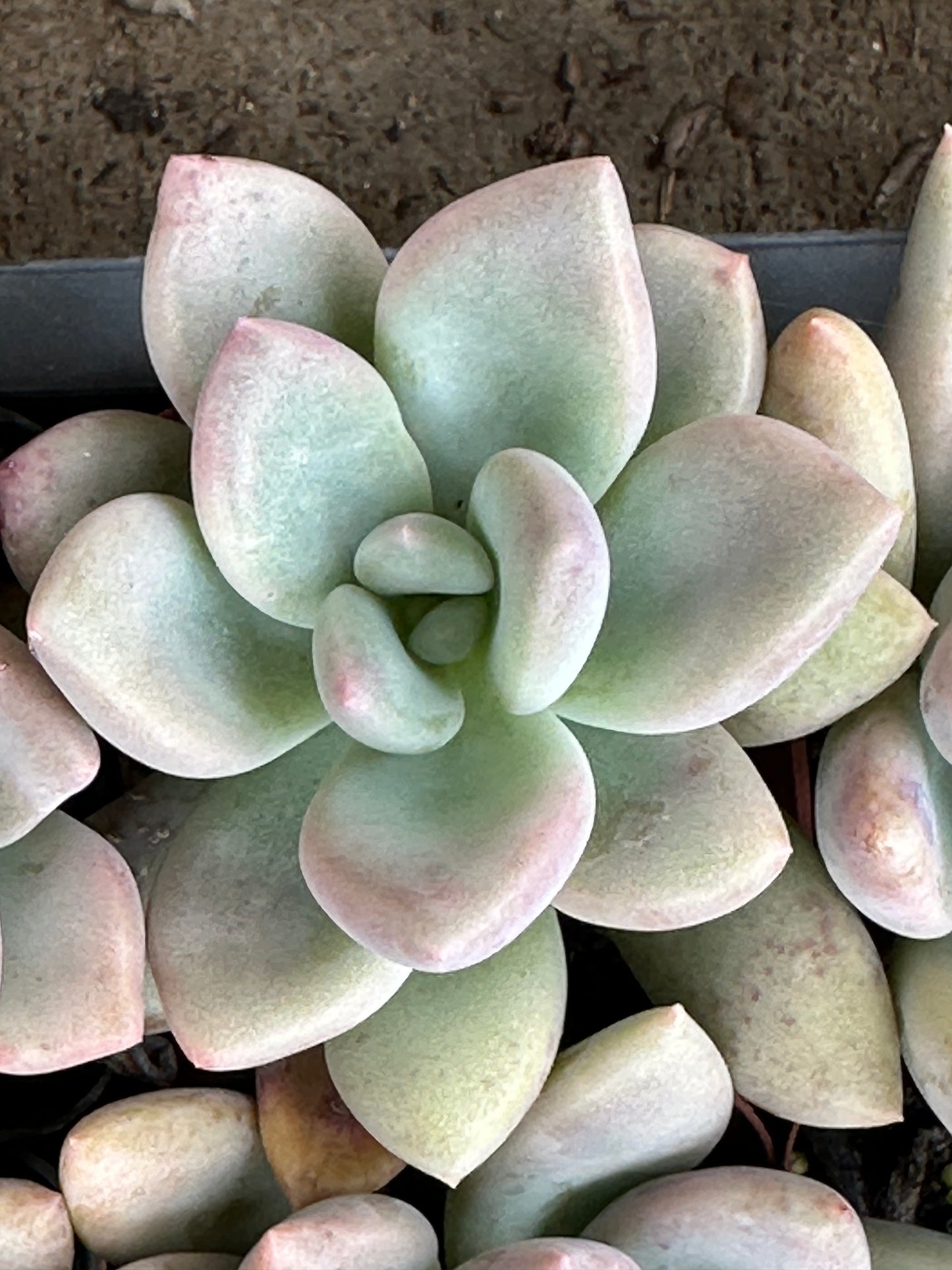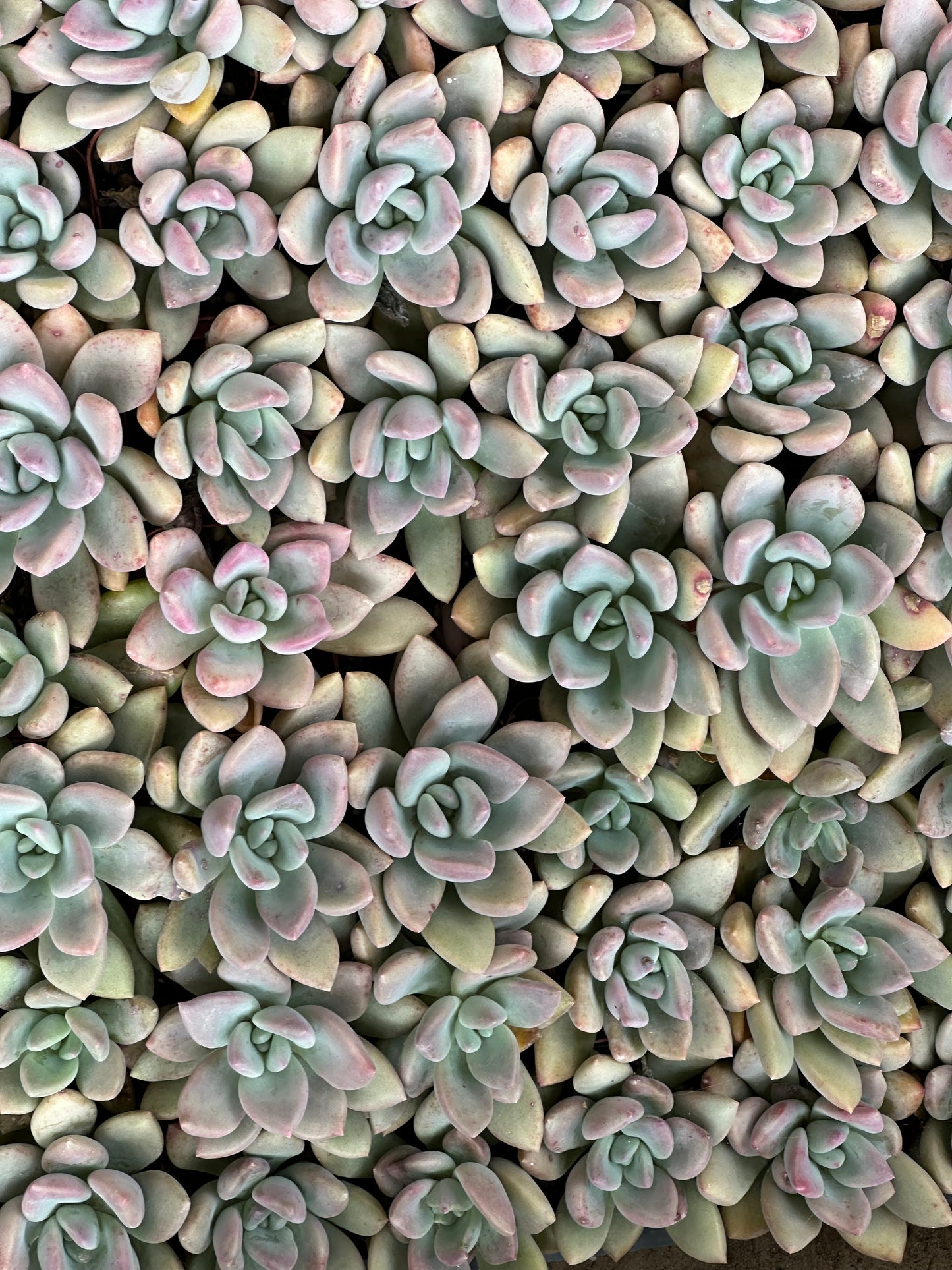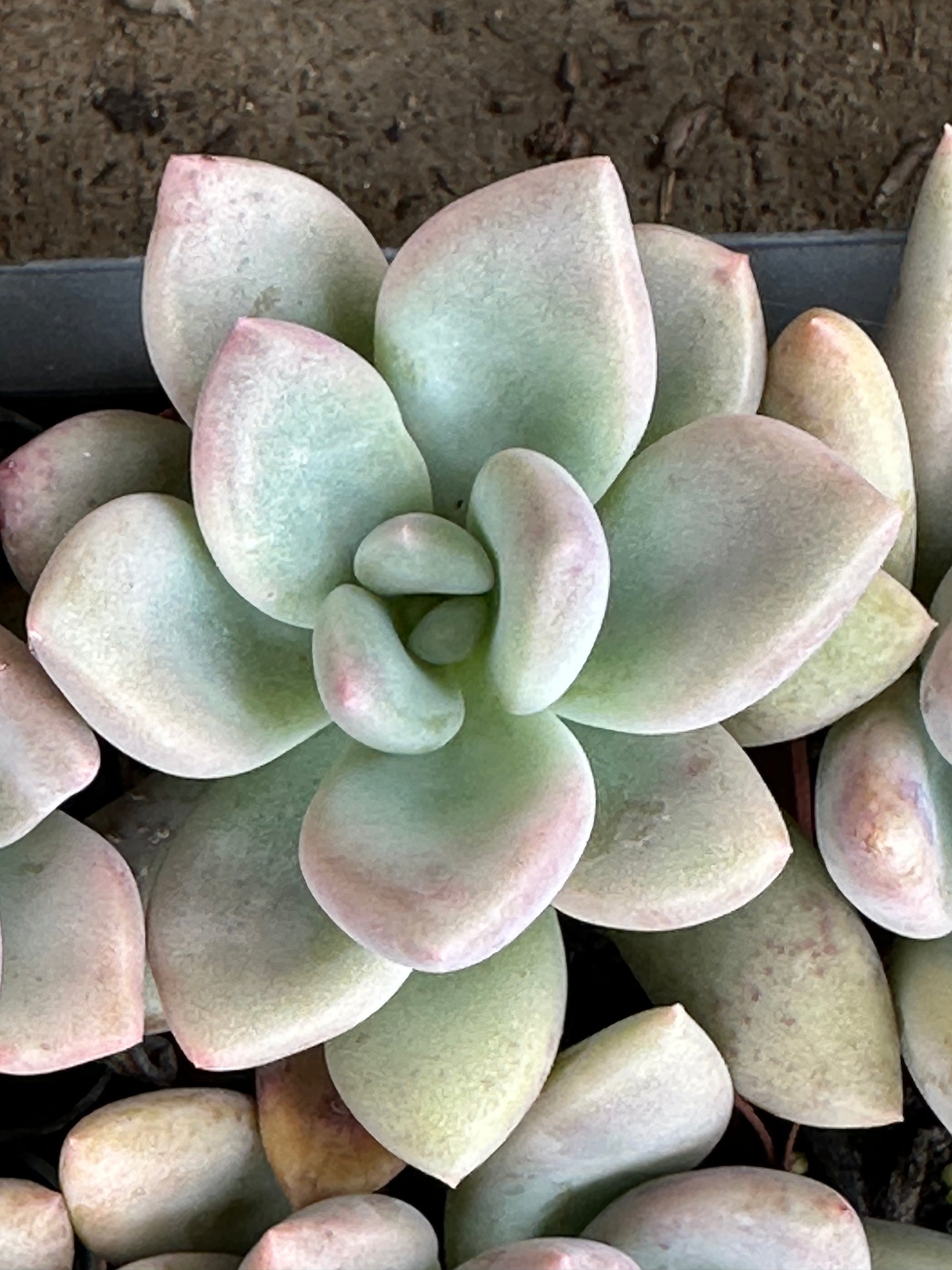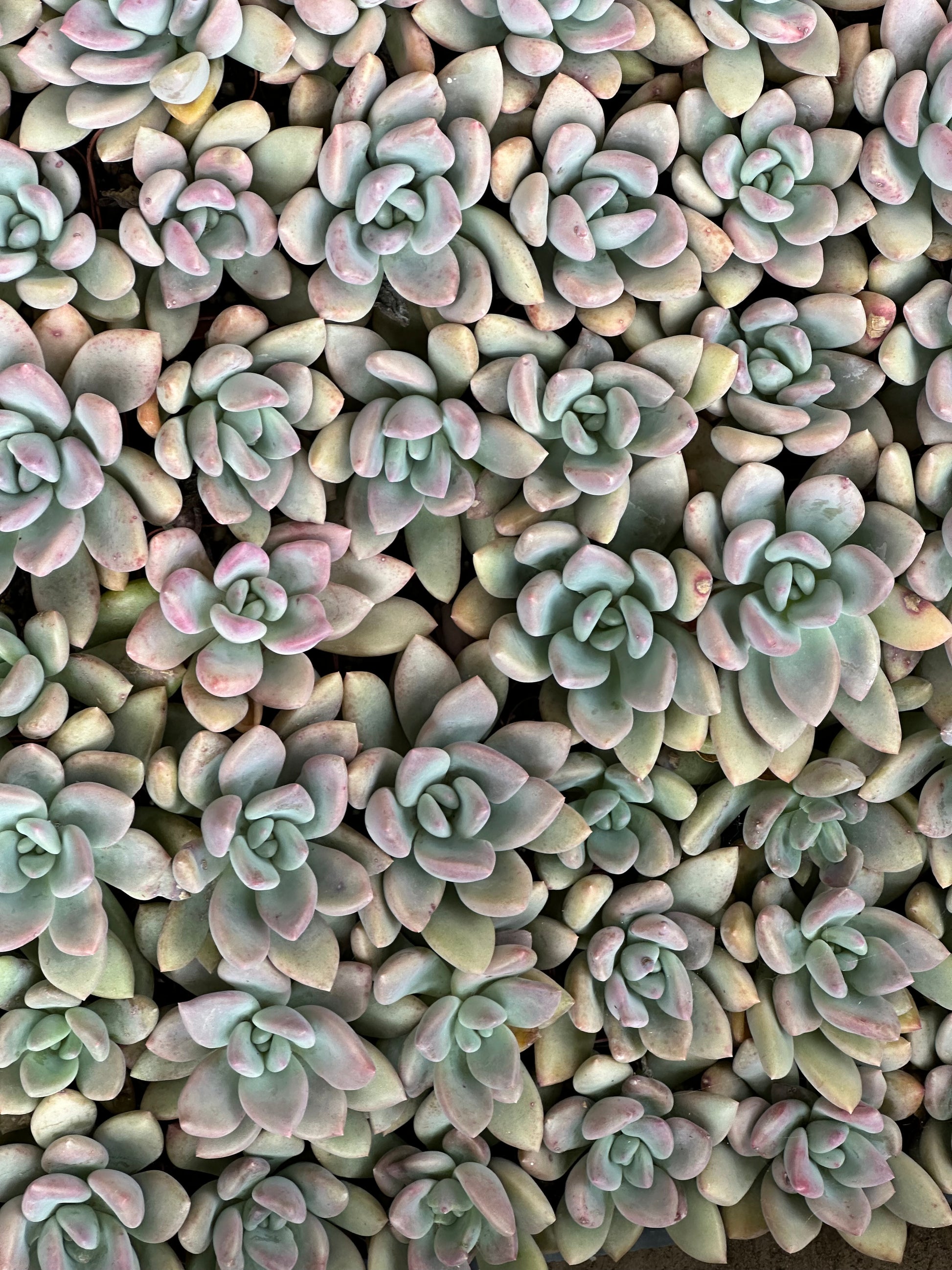1
/
of
2
SEAH
Pachyphytum - Blue Haze
Pachyphytum - Blue Haze
Regular price
$4.99 USD
Regular price
$7.99 USD
Sale price
$4.99 USD
Unit price
/
per
Couldn't load pickup availability
Pachyphytum 'Blue Haze', a member of the succulent family, is known for its distinctive and appealing appearance. Here's a detailed overview of its morphological characteristics, growth habits, maintenance points, and reproduction methods:
Morphological Characteristics
- Leaves: Pachyphytum 'Blue Haze' features thick, fleshy leaves that are a striking blue-gray color, often with a powdery or waxy coating that gives them a "hazy" appearance. The leaves are oval to spindle-shaped and can have a slight pink or purple tint at the tips or edges when exposed to bright sunlight.
- Size: This plant typically forms compact rosettes that can grow up to 10 cm (about 4 inches) in diameter. The stout leaves and slow growth habit make it a striking addition to succulent collections.
- Flowers: It blooms with small bell-shaped flowers, usually in shades of pink or orange, on tall stems above the foliage. The flowering season is late winter to early spring.
Growth Habits
- Light: Prefers bright, indirect sunlight or partial shade. Direct sunlight can enhance the leaf colors but may also cause sunburn if too intense.
- Temperature: It thrives in warmer temperatures and is not frost-tolerant. Ideal growing temperatures are between 15°C to 25°C (59°F to 77°F).
- Water: Like many succulents, 'Blue Haze' requires minimal water. Water thoroughly when the soil is completely dry and then allow it to dry out again before the next watering. Reduce watering frequency during the winter months.
Maintenance Points
- Soil: Well-draining soil is crucial. A cactus or succulent potting mix is ideal.
- Pot: Use a pot with drainage holes to prevent water accumulation and root rot.
- Fertilizer: A light application of a diluted, balanced fertilizer can be applied during the growing season (spring and summer), but is not necessary for healthy growth.
- Pruning: Generally requires little to no pruning. Dead or damaged leaves can be removed to maintain appearance.
Reproduction Method
- Leaf Cuttings: The most common method of propagation for 'Blue Haze' is through leaf cuttings. Gently twist and pull a leaf from the stem, ensuring it is a clean break. Allow the leaf to callous over for a few days, then place it on top of well-draining soil. Roots and a new plantlet will eventually form.
- Offsets: 'Blue Haze' may produce offsets or "pups" that can be separated and replanted. This method is straightforward and effective for expanding your collection.
- Seeds: While it can be grown from seeds, this method is less common due to the slower growth rate and longer time to maturity.
Pachyphytum 'Blue Haze' is celebrated for its unique coloration and form, making it a popular choice among succulent enthusiasts. Its care requirements are minimal, making it suitable for beginners looking to add an eye-catching element to their indoor or outdoor succulent gardens.
Share



